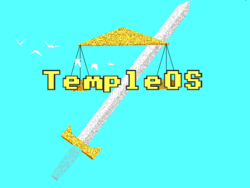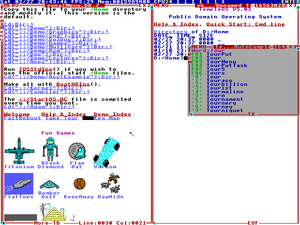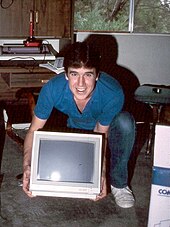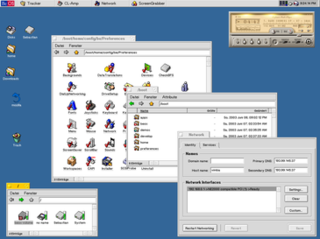
BeOS is a discontinued operating system for personal computers that was developed by Be Inc. It was conceived for the company's BeBox personal computer which was released in 1995. BeOS was designed for multitasking, multithreading, and a graphical user interface. The OS was later sold to OEMs, retail, and directly to users; its last version was released as freeware.

Plan 9 from Bell Labs is a distributed operating system which originated from the Computing Science Research Center (CSRC) at Bell Labs in the mid-1980s and built on UNIX concepts first developed there in the late 1960s. Since 2000, Plan 9 has been free and open-source. The final official release was in early 2015.

Syllable Desktop is a discontinued free and open-source lightweight hobbyist operating system for Pentium and compatible processors. Its purpose was to create an easy-to-use desktop operating system for the home and small office user. It was forked and expanded AtheOS after the developer of AtheOS moved on to other projects in July 2002.

SkyOS is a discontinued prototype commercial, proprietary, graphical desktop operating system written for the x86 computer architecture. As of January 30, 2009 development was halted with no plans to resume its development. In August 2013, developer Robert Szeleney announced the release of a public beta on the SkyOS website. This allows public users to download a Live CD of the SkyOS operating system, for testing and to optionally install the system.

The GNU Project is a free software, mass collaboration project announced by Richard Stallman on September 27, 1983. Its goal is to give computer users freedom and control in their use of their computers and computing devices by collaboratively developing and publishing software that gives everyone the rights to freely run the software, copy and distribute it, study it, and modify it. GNU software grants these rights in its license.
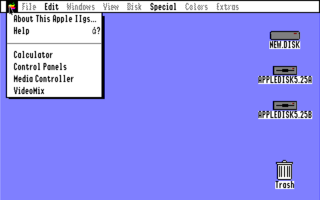
GS/OS is an operating system developed by Apple Computer for its Apple IIGS personal computer. It provides facilities for accessing the file system, controlling input/output devices, loading and running program files, and a system allowing programs to handle interrupts and signals. It uses ProDOS as its primary filing system. GS/OS is a component of Apple IIGS System Software versions 4.0 through 6.0.1, and was the first true 16-bit operating system for the IIGS.
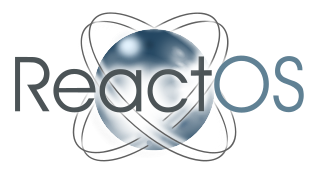
ReactOS is a free and open-source operating system for i586/amd64 personal computers intended to be binary-compatible with computer programs and device drivers developed for Windows Server 2003 and later versions of Microsoft Windows. ReactOS has been noted as a potential open-source drop-in replacement for Windows and for its information on undocumented Windows APIs.
A patch is a set of changes to a computer program or its supporting data designed to update or repair it. This includes bugfixes or bug fixes to remove security vulnerabilities and correct bugs (errors). Patches are often written to improve the functionality, usability, or performance of a program. The majority of patches are provided by software vendors for operating system and application updates.

Haiku, originally OpenBeOS, is a free and open-source operating system for personal computers. It is a community-driven continuation of BeOS and aims to be binary-compatible with it, but is largely a reimplementation with the exception of certain components like the Deskbar. The Haiku project began in 2001, supported by the nonprofit Haiku Inc., and the operating system remains in beta.

OSNews is a computing online newspaper. It originally focused on operating systems and their related technologies that launched in 1997, but is now aggregating consumer electronics news. The content is managed by a group of editors and the owner. As of 2014, its managing editor is Thom Holwerda, who joined in 2005.

Growl is a deprecated global notification system and pop-up notification implementation for the Mac OS X and Windows operating systems. Applications can use Growl to display small notifications about events which may be important to the user. This software allows users to fully control their notifications, while allowing application developers to spend less time creating notifications and Growl developers to concentrate on the usability of notifications. Growl can be used in conjunction with Apple's Notification Center that is included in Mac OS X 10.8 and higher.
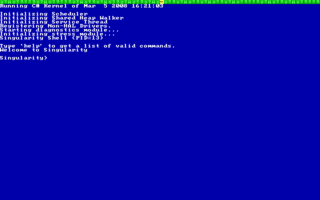
Singularity is an experimental operating system developed by Microsoft Research between July 9, 2003, and February 7, 2015. It was designed as a high dependability OS in which the kernel, device drivers, and application software were all written in managed code. Internal security uses type safety instead of hardware memory protection.
Project Builder was an integrated development environment (IDE) originally developed by NeXT for version 3 of the NeXTSTEP operating system by separating out the code editing parts of Interface Builder into its own application.

MonoDevelop was an open-source integrated development environment for Linux, macOS, and Windows. Its primary focus is development of projects that use Mono and .NET Framework. MonoDevelop integrates features similar to those of NetBeans and Microsoft Visual Studio, such as automatic code completion, source control, a graphical user interface (GUI), and Web designer. MonoDevelop integrates a Gtk# GUI designer called Stetic. It supports Boo, C, C++, C#, CIL, D, F#, Java, Oxygene, Vala, JavaScript, TypeScript, and Visual Basic.NET. Although there is no word from the developers that it has been discontinued, nonetheless, it hasn't been updated in 4 years and is no longer installable on major operating systems, such as Ubuntu 22.04 and above. Its parent Microsoft seems to have shifted focus to Visual Studio Code and the .NET Framework, which runs on many operating systems, including Linux.

Unix is a family of multitasking, multi-user computer operating systems that derive from the original AT&T Unix, whose development started in 1969 at the Bell Labs research center by Ken Thompson, Dennis Ritchie, and others.

Red Star OS is a North Korean Linux distribution, with development first starting in 1998 at the Korea Computer Center (KCC). Prior to its release, computers in North Korea typically used Red Hat Linux, and later switched to modified versions of Microsoft Windows with North Korean language packs installed.
BareMetal is an exokernel-based single address space operating system (OS) created by Return Infinity.

Terrence Andrew Davis, better known as Terry A. Davis, was an American electrical engineer and computer programmer best known for creating and designing TempleOS, an operating system in the public domain. Its development was an extremely complex, time-consuming, and unusual undertaking for one person.

postmarketOS is an operating system primarily for smartphones, based on the Alpine Linux distribution.
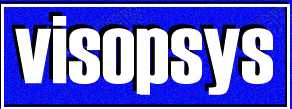
Visopsys, is an operating system, written by Andy McLaughlin. Development of the operating system began in 1997. The operating system is licensed under the GNU GPL, with the headers and libraries under the less restrictive LGPL license. It runs on the 32-bit IA-32 architecture. It features a multitasking kernel, supports asynchronous I/O and the FAT line of file systems. It requires a Pentium processor.
